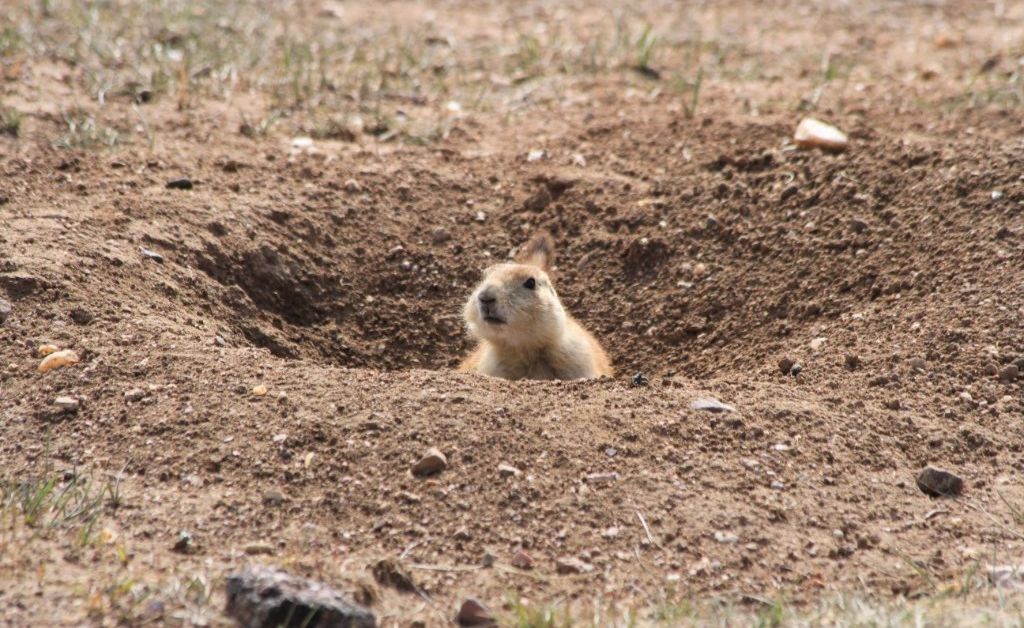First two things we see as we are driving into Wind Cave National Park are prairie dogs and bison. A good portent for things to come!
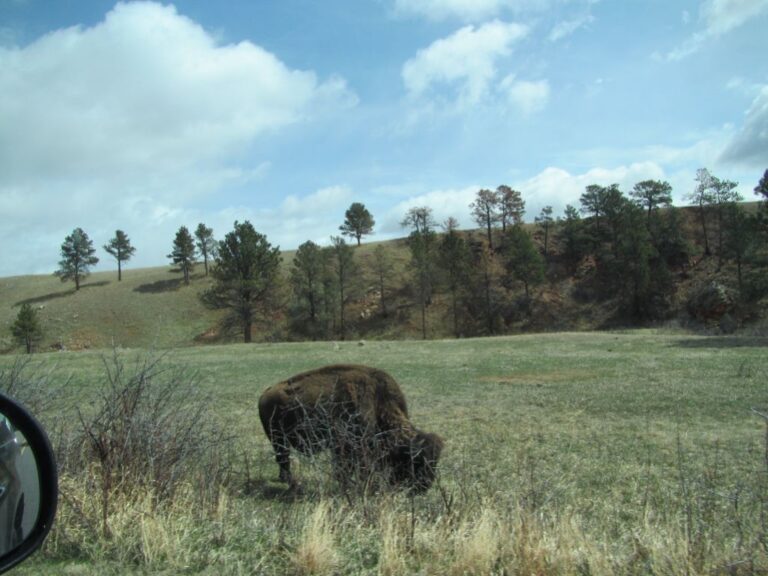
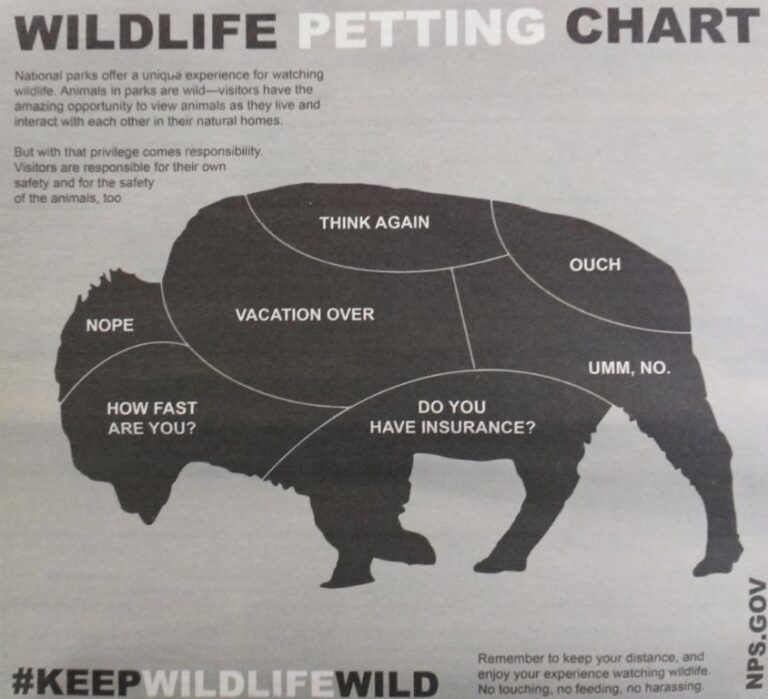
We found this helpful bison petting guide.
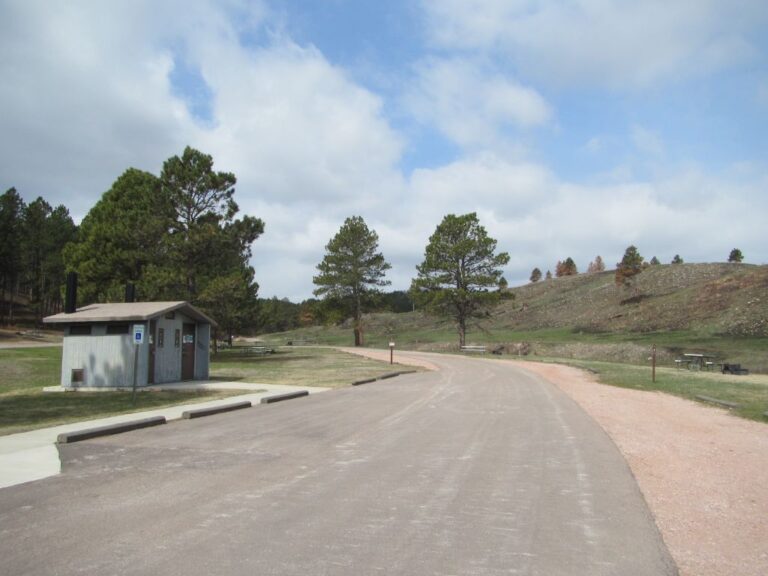
The campground in the park, Elk Mountain Campgroud, was walk-in only (no reservations), so we weren’t sure what it would be like. Vault toilets and water available at the visitor center. Pull-thru campsites, really just pull off the road which could have been noisy, but after the first night we were the only ones in the campground, so no problem running our generator or letting the dogs bark!
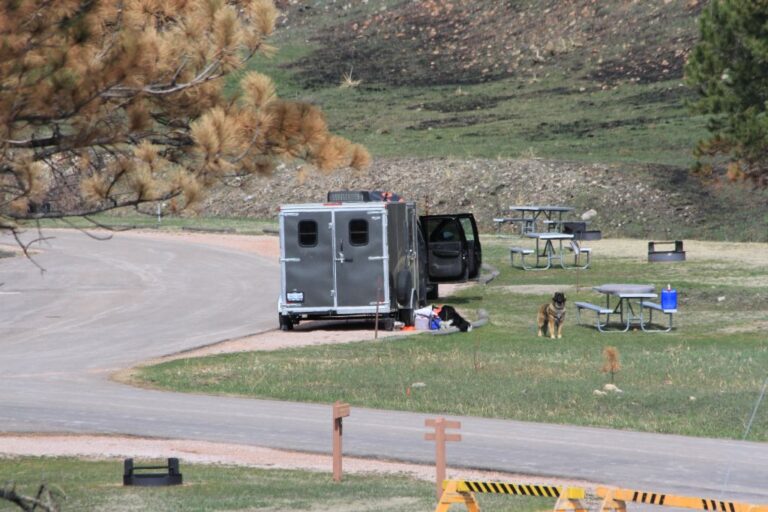
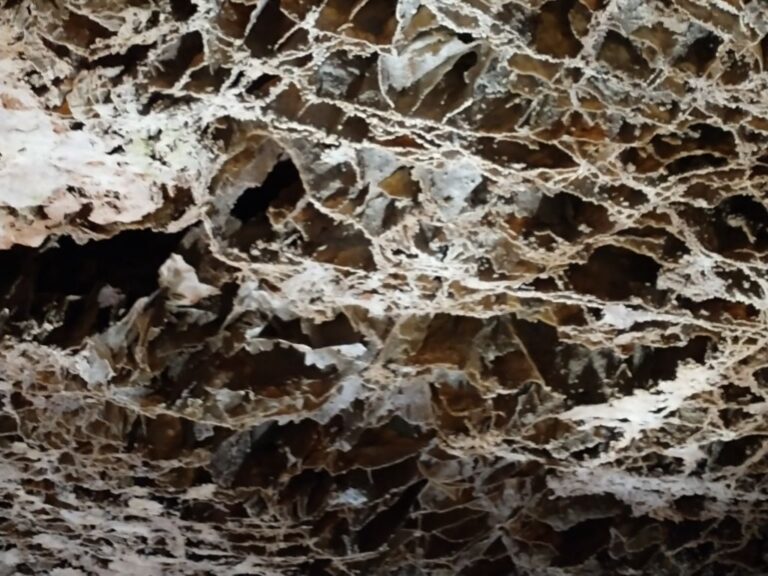
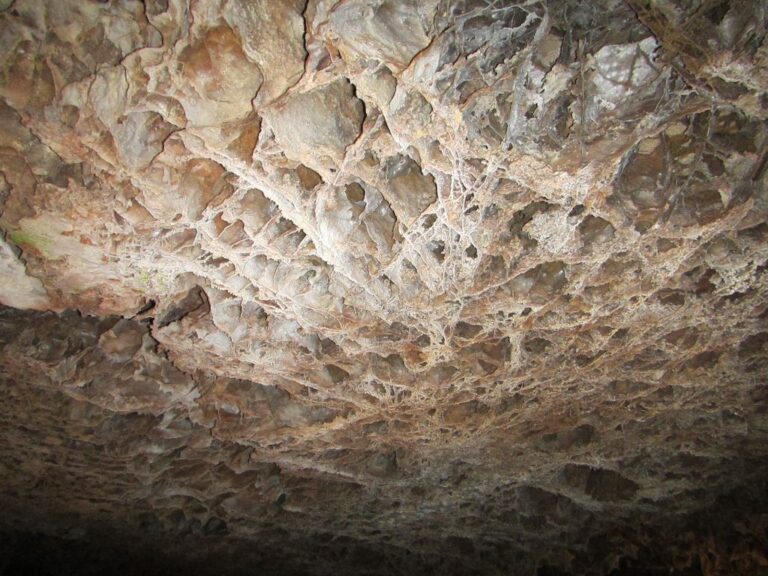
There are two caves that we want to visit while we are in this park. The first, Wind Cave, is famous for its calcite formations, known as “Boxwork”, and is the seventh largest cave in the world (3rd largest in the US) with over 160 miles of explore passageways with more being added every year. Jewel Cave contains about 95% of the known boxwork formations in the world.
There is very little water in the cave, so it is considered a dry cave. Very different from the caves that we have visited to-date. Aside from the boxwork and some “popcorn” formations (formed by water seeping in from the surface) there are no formations such as stalactites, stalagmites, columns, flows, etc. that we usually see in caves.
The most fun part of the cave tour was the very small, narrow and windy passages that we had to walk thru.
There were only two caves tours on offer, one was very short, so we took the “strenuous” 1-1/2 hour Fairgrounds tour. The tour description says that there are 450 steps that must be negotiated (equivalent to 30 stories), which sounds like a lot of stair-work!
As it turns out, we didn’t need to be concerned. The stairs were broken up into many small up or down segments.
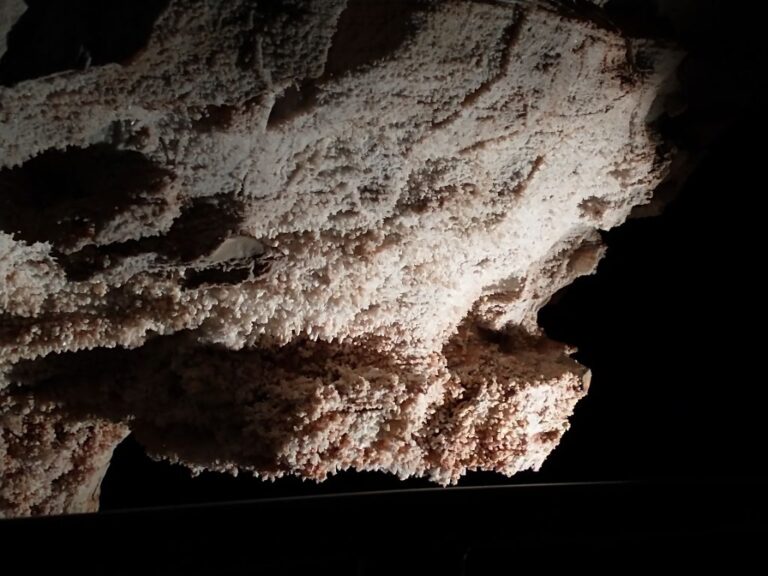
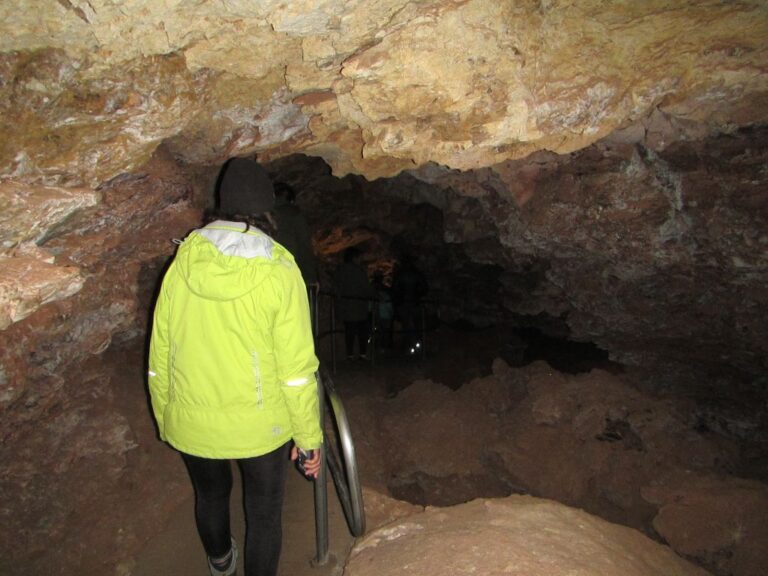
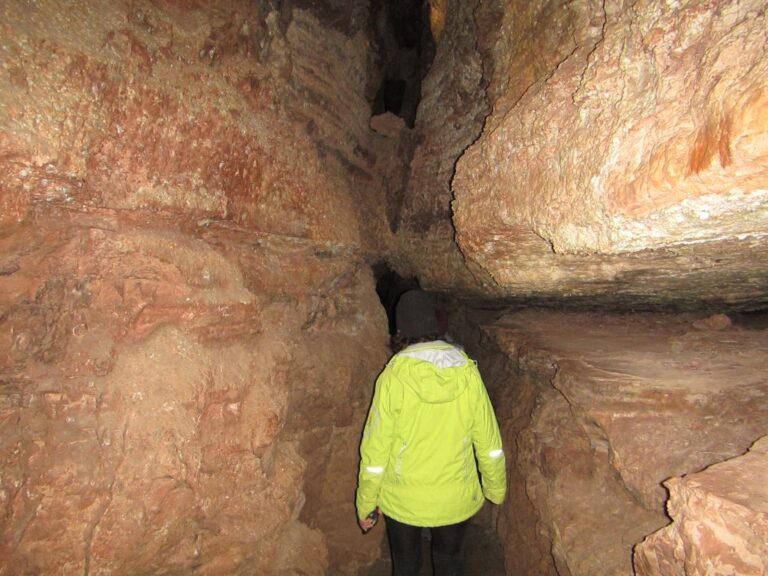
Jewel Cave National Monument, is located about 36 miles from Wind Cave. Jewel Cave, with 215 miles of explored passageways, is the fifth longest cave in the world, second longest in the US (after Mammouth Cave which has 426 miles of passageways).
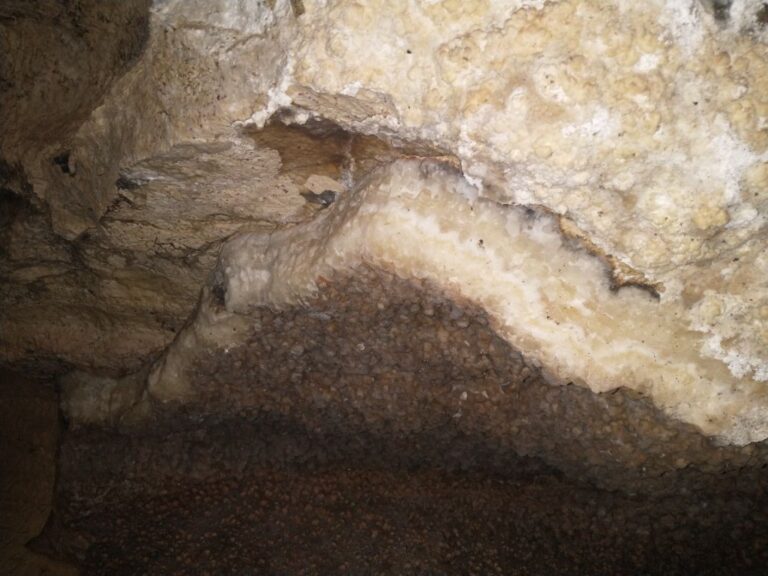
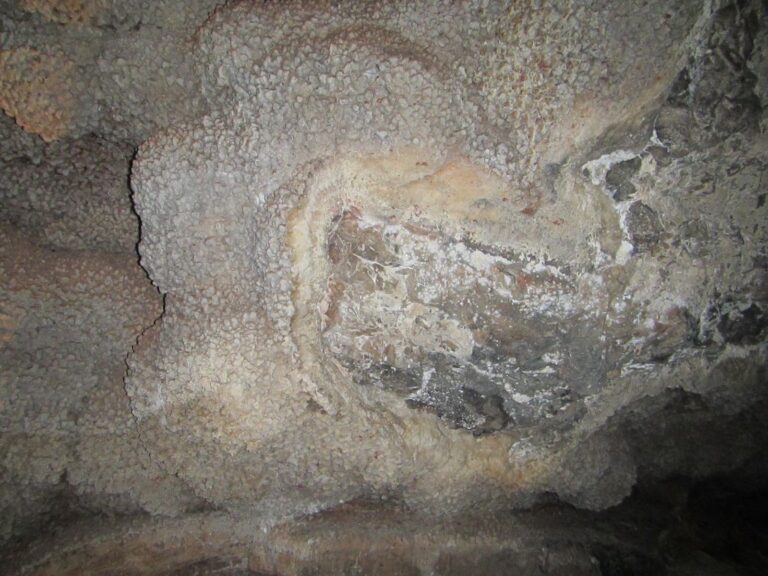
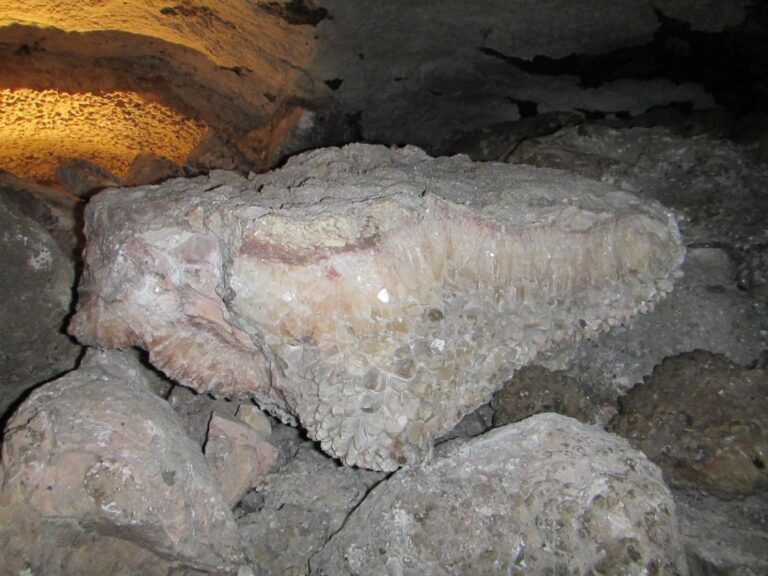
Most of the cave walls and ceiling are covered in muddy brown looking lumps that are “Spar” crystals. When these lumps are broken open the calcite crystalline formations can be seen. These crystals are formed underwater (caves were flooded in the past) over thousands of years as calcium carbonate precipitates.
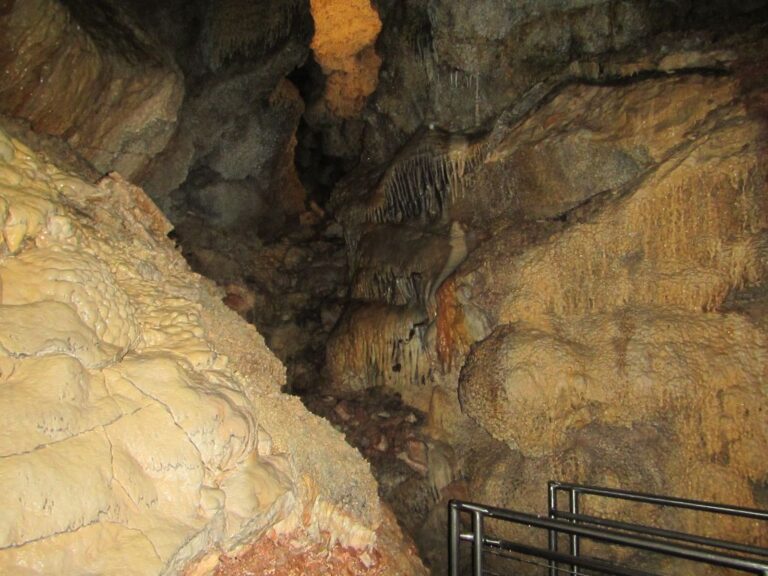
Jewel Cave is also considered to be a dry cave, but has water in one room, known as the “Wet Room”. This room has some features that we usually associate with caves: stalactites, flows, etc.
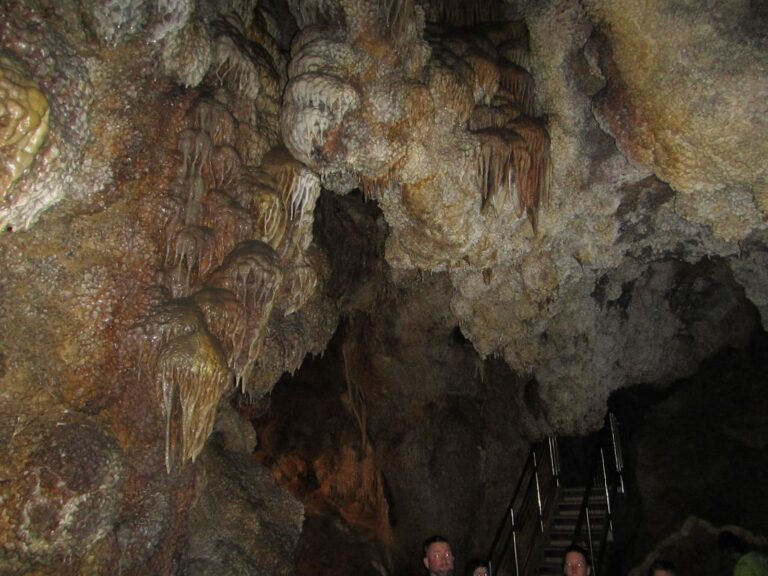
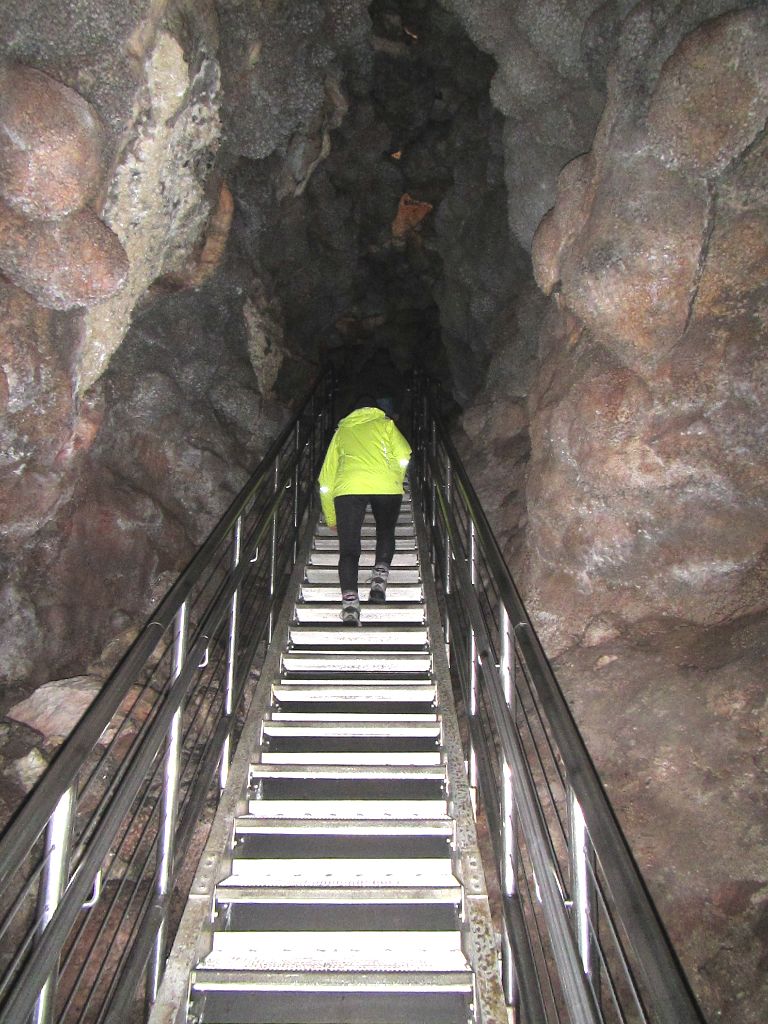
One of the coolest things about this cave, for me, was that the entire tour was done on stainless steel walkways and stairs. Your feet never touched the cave floor. It looked like the walkways were built in place, but I can’t imagine how they accomplished that much welding without damaging the cave.
Trip Summary:
Depart: Lake Ogallala State Recreation Area, NE 8:30 am Apr 17; Odometer: 137600 miles
Arrive: Wind Cave National Park (Elk Mountain Campground), SD 3:00 pm Apr 17; Odometer: 137840 miles
Gas Summary:
Oskosh, NE (Apr 19): 13 g @ $3.40/g ($44.19) – ODO 137641 miles
Hot Springs, SD (Apr 19): 20.9g @ $3.45/g ($71.97) – ODO 137822 miles

